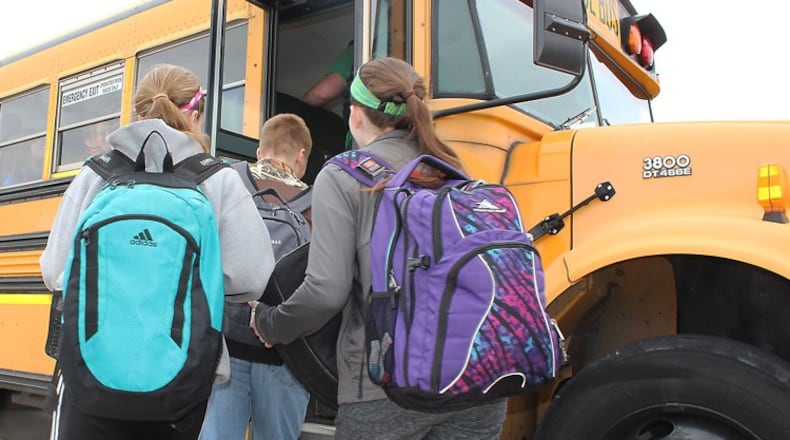For years, Dayton Public Schools has struggled to get students to and from all of those schools on time, because of a lack of drivers, as well as the complexity of routing students to dozens of different schools with different start times. They’ve tried a variety of approaches, sometimes collaborating with RTA.
Ohio Department of Education data showed that just before the COVID pandemic hit, DPS had over 12,500 students at its own 26 schools, 3,000 students attending 36 private schools and another 6,000-plus at 27 physical charter schools.
Superintendent Elizabeth Lolli said by taking the charter and private school execution off their plate, DPS can focus its own buses and drivers on students at the DPS school buildings, including the high schools, which often have not had bus service.
Lolli said that will help the district not only improve on-time performance, but also improve transportation to DPS athletic events and after-school activities, plus free up buses for field trips — which have generally not been an option for DPS due to the shortage of drivers.
“The reason that decision was made was because Dayton Public Schools needs to be able to transport their students on time, both to and from school,” Lolli said. “We need to offer busing for our preschool children and our high schoolers without paying for an RTA pass.”
Lolli and district Treasurer Hiwot Abraha said the complete DPS busing operation has cost the district $19 million to $22 million a year, with about $8 million reimbursed by the state. Lolli said DPS is still working on routing buses and hiring drivers for next school year, so she doesn’t know exactly how much the district will spend on its own busing operation for 2021-22.
The $17.7 million for the First Student contract will come out of DPS’ massive $130 million allocation of federal “ESSER” relief funds.
Dave Taylor, superintendent of the DECA charter school chain, said in recent years, multiple DPS buses would not show up on nearly a daily basis, with students forced to wait for a replacement or call for a ride home.
“I do not have enough detail to fully react to this news, but if First Student can provide enough drivers to safely get our students to and from school, it could be a win for everyone,” Taylor said.
That driver shortage has been a problem not just for Dayton, but for school districts around Dayton and statewide, as Amazon and other warehouse facilities hire drivers who might otherwise drive school buses.
Karyn Hecker, regional director for the Archdiocese of Cincinnati’s Dayton-area schools, echoed Taylor’s description of driver shortages and missing DPS buses at Catholic schools. She said the Archdiocese has had a representative working with DPS’ transportation officials this year, but she didn’t have good information on how First Student has performed at other local school districts.
For DPS’ own students, Lolli said they are still working on details like how far away from school a student has to live to qualify for busing. She said she and the school board have committed to not laying off any drivers, saying that adding high school, field-trip and after-school routes will require heavy staffing.
“We do know our tiered school start times will be better,” Lolli said. “We’ll start school 7:15-ish, and the latest school will dismiss at 3:45-ish. We’ll announce (those details) soon. Currently we’re as early as 7 a.m. and as late as 4:15. It’s been a really long day for some kids.”
About the Author

